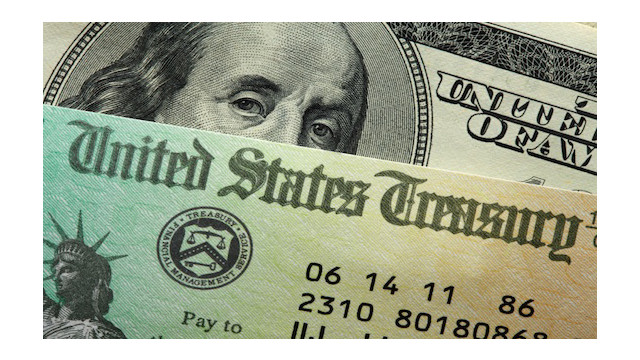Accounting
Coronavirus Stimulus: Here are the Details on Stimulus Payments
The standard check payment is $1,200 per individual or $2,400 for married couples who file a joint tax return. In addition, a family will be entitled to receive an extra $500 per child. For this purpose, a “child” is defined the same way as...
Mar. 27, 2020

The new stimulus package provides relief for a vast segment of the U.S. population affected by the COVID-19 pandemic. One key component of the package is the checks that the White House hopes will start going out to Americans in the next few weeks.
As far as taxes are concerned, recipients won’t be taxed on the payments, but there are a few wrinkles.
The standard check payment is $1,200 per individual or $2,400 for married couples who file a joint tax return. In addition, a family will be entitled to receive an extra $500 per child. For this purpose, a “child” is defined the same way as the term is used for the Child Tax Credit (CTC). The CTC covers dependent children under age 17 who live in the household for more than half of the year.
However, the checks will phase out for higher-income taxpayers. The phase-out begins at $75,000 of adjusted gross income (AGI) for single filers and $150,000 of AGI for married couples filing jointly ($112,500 for heads of household).
How it works: For every $100 of income above the threshold, the payment drops by $5. Therefore, if you are a single filer earning $75,500, your check will be reduced to $1,175 ($1,200 – $25). The phase-out is complete once a single filer reaches $99,000 of AGI and $198,000 for a married couple filing jointly ($146,500 for heads of household). There are no such phase-outs for children.
To receive a check, the taxpayer must have a Social Security number (SSN). For adopted children, an adoption taxpayer identification will suffice.
Now for the tax wrinkles. For starters, the payments are exempt from federal income tax. However, the checks are technically advances of refundable credits. The U.S. Treasury will pay the amount owed based on the tax return most recently filed by the taxpayer. That will typically be a 2018 return or the 2019 just filed in 2020. Alternatively, the IRS will rely on information from the Social Security Administration (SSA).
When the taxpayer files a 2020 return, the IRS will compare the numbers. In most cases, it should be correct. It’s not yet clear what would happen if there’s been an overpayment, but it’s doubtful the IRS would tax this amount.
The payment won’t have any effect on 2019 tax returns. Many taxpayers have already filed their returns based on the initial April 15 tax deadline. Now the due date for payment and filing has been moved to July 15.
The stimulus plan also includes major upgrades in unemployment benefits. Generally, unemployment benefits are subject to tax, but the government may make an exception in this case. We have not seen any determination.
Is that it? Not by a long shot. You can expect the IRS to have plenty more to say on this issue. Additional guidance is expected shortly.
For more information: https://www.irs.gov/newsroom/irs-unveils-new-people-first-initiative-covid-19-effort-temporarily-adjusts-suspends-key-compliance-program
